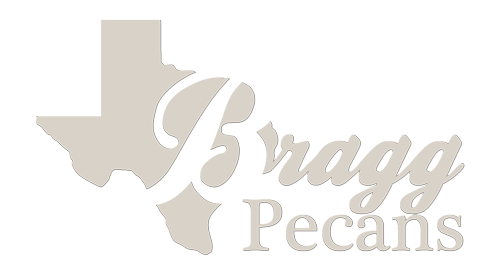
Bragg Pecans
Pecan History
Pecans have their origins in prehistory. Fossil remains found in Texas and the northern part of Mexico indicate that the pecan was here and producing long before Native Americans came on the scene. The discovery of fossil remains along with literally millions of native pecan trees found along most major streams and irrigation canals in these two regions further indicate that this is the original home of the pecan and that it spread north and east from this area.
The American Indian built his very life and his nomadic existence around the pecan tree and its life-sustaining nut. Archaeologists have shown a major concentration of Indian campsites in the immediate areas of the heaviest native pecan stands. The earliest recorded writings on the pecan by Cabeza de Vaca nearly 600 years ago indicate that the Indian planned his movements and activities around the maturity of the pecan nut.
De Vaca, who was a captive of the Indians from 1529 to 1535, wrote in his diary that the Indians came in great numbers and concentrated in the river valleys in the fall to harvest pecans. Hunting and all other activities took place from their pecan valley headquarters. De Vaca also pointed out that they depended on the pecan as their major food resource for about 4 months of the year. How appropriate that the USDA has named the improved varieties after Indian tribes. Excerpt from ” Development of the Pecan Industry” by B.G. Hancock
World-renown horticulturist, Luther Burbank’s quote in 1908: “If I were a young man, I would go to Texas, knowing as I do the possibilities of the pecan industry, and devote my life in propagating new species (varieties) of the pecan and doing the same work there in nut culture as I have done here in other lines of Horticulture. Your pecan is superior to our walnut and you are standing in your own light – why not develop it?”
